The Impact of Wildfire Smoke on Your Chimney: Essential Information for Portland Homeowners
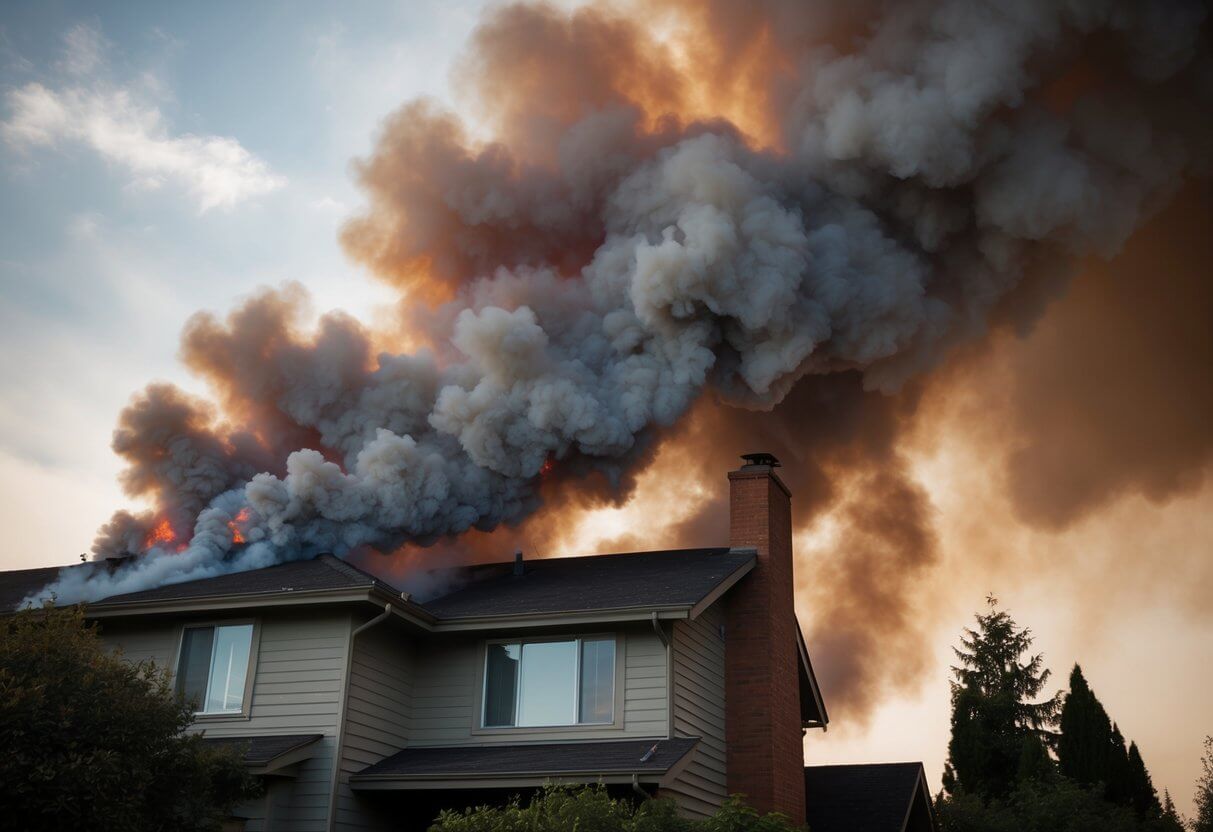
Introduction
Portland residents are no strangers to the challenges posed by wildfire smoke, especially during hot summer months. The smoke not only affects outdoor air quality but can also infiltrate homes through various openings, including chimneys. Wildfire smoke can damage chimneys, reduce their efficiency, and potentially introduce harmful particles into living spaces.
Understanding how wildfire smoke impacts chimneys is crucial for maintaining a healthy home environment. The fine particles in smoke can accumulate in chimney flues, creating a sticky residue that may lead to blockages or increase the risk of chimney fires. This buildup can also impair the chimney’s ability to vent properly, potentially causing indoor air quality issues.
As wildfires become more frequent in the region, Portland homeowners need to be proactive in protecting their chimneys and indoor air quality. Regular chimney inspections and cleanings are essential, especially after periods of heavy smoke exposure. Additionally, installing chimney caps and ensuring proper sealing can help minimize smoke infiltration during wildfire events.
Key Takeaways
- Wildfire smoke can damage chimneys and impair their functionality
- Regular chimney maintenance is crucial for Portland residents to protect indoor air quality
- Proactive measures like chimney caps can help minimize smoke infiltration during wildfire events
Understanding Wildfire Smoke and Its Composition
Wildfire smoke contains a complex mixture of particles and gases that can impact air quality and human health. Its composition varies based on factors like fuel type and burn conditions.
The Chemistry of Wildfire Smoke
Wildfire smoke consists of gases and fine particulate matter. The main gases include carbon monoxide, carbon dioxide, and nitrogen oxides. Particulate matter, especially PM2.5 (particles smaller than 2.5 micrometers), is a major concern.
Other components include:
- Volatile organic compounds (VOCs)
- Polycyclic aromatic hydrocarbons (PAHs)
- Aldehydes
- Sulfur dioxide
The exact composition depends on what’s burning. Forest fires produce different smoke than grassland or urban fires.
How Wildfire Smoke Affects Air Quality
Wildfire smoke can drastically reduce air quality over large areas. It spreads fine particles and gases that linger in the atmosphere. These pollutants can travel hundreds of miles from the fire source.
PM2.5 is particularly harmful, as it can penetrate deep into the lungs. High levels of PM2.5 can cause:
- Respiratory issues
- Eye and throat irritation
- Increased risk of heart problems
Wildfire smoke can push air quality into unhealthy ranges, even in areas far from the fire.
Measuring Air Pollution: Air Quality Index (AQI)
The Air Quality Index (AQI) is a standardized system used to measure and report air pollution levels. The U.S. Environmental Protection Agency (EPA) calculates AQI based on five major air pollutants:
- Ground-level ozone
- Particle pollution (PM2.5 and PM10)
- Carbon monoxide
- Sulfur dioxide
- Nitrogen dioxide
AQI values range from 0 to 500, with higher numbers indicating worse air quality:
- 0-50: Good (Green)
- 51-100: Moderate (Yellow)
- 101-150: Unhealthy for Sensitive Groups (Orange)
- 151-200: Unhealthy (Red)
- 201-300: Very Unhealthy (Purple)
- 301-500: Hazardous (Maroon)
During wildfires, AQI can reach hazardous levels, prompting health warnings and advisories.
Health Risks Associated with Wildfire Smoke
Wildfire smoke poses significant health hazards to Portland residents. It contains harmful particles and gases that can affect both short-term and long-term health, especially for vulnerable populations.
Immediate Health Effects of Wildfire Smoke
Exposure to wildfire smoke can cause immediate health problems. Common symptoms include:
- Coughing
- Wheezing
- Difficulty breathing
- Eye irritation
- Scratchy throat
- Runny nose
- Headaches
- Fatigue
These symptoms often worsen with increased smoke concentration. People with pre-existing respiratory conditions may experience more severe reactions, such as asthma attacks or exacerbation of chronic obstructive pulmonary disease (COPD).
Long-Term Health Impacts
Prolonged or repeated exposure to wildfire smoke can lead to serious long-term health consequences. Inhaling wildfire smoke may cause chronic inflammation of the airways and contribute to the development of respiratory conditions.
Studies suggest that repeated exposure to wildfire smoke may increase the risk of:
- Cardiovascular diseases
- Lung cancer
- Chronic respiratory issues
Research also indicates potential links between wildfire smoke exposure and adverse pregnancy outcomes, though more studies are needed to fully understand these effects.
Vulnerable Groups and Health Risks
Certain populations are more susceptible to the health risks associated with wildfire smoke. These vulnerable groups include:
- Children and infants
- Elderly individuals
- Pregnant women
- People with pre-existing heart or lung conditions
- Outdoor workers
These groups may experience more severe symptoms or develop health complications more quickly when exposed to wildfire smoke. It’s crucial for vulnerable individuals to take extra precautions during smoke events, such as staying indoors and using air purifiers.
Impact of Wildfire Smoke on Chimneys and Ventilation Systems
Wildfire smoke can significantly affect chimney structures and home ventilation systems. The particulate matter in smoke can accumulate and cause issues with airflow and indoor air quality.
How Smoke Interacts with Chimney Structures
Wildfire smoke contains fine particles that can adhere to chimney walls and flues. These particles may create a sticky residue, trapping additional soot and debris. Over time, this buildup can narrow the chimney’s diameter, reducing its efficiency and potentially leading to dangerous blockages.
Particulate matter from wildfires can also corrode metal components within the chimney system. This corrosion may damage chimney liners, dampers, and other crucial elements, compromising the structure’s integrity and safety.
Regular cleaning becomes even more critical during wildfire seasons. Homeowners should schedule professional chimney inspections more frequently to address smoke-related buildup and potential damage.
Maintaining Air Circulation During Wildfire Events
Proper air circulation is essential during wildfire smoke events. Ventilation systems play a crucial role in maintaining indoor air quality. However, they must be managed carefully to prevent smoke infiltration.
Indoor air quality can be significantly impacted by outdoor smoke. To minimize this:
- Use high-efficiency air filters in HVAC systems
- Seal gaps around windows and doors
- Limit outdoor air intake during peak smoke periods
Air purifiers with HEPA filters can help remove smoke particles from indoor air. Placing these devices strategically throughout the home can improve overall air quality.
Regularly changing filters in ventilation systems is crucial during wildfire seasons. This practice helps maintain system efficiency and prevents the recirculation of captured smoke particles.
Protective Measures and Adaptations for Homes
Protecting your home from wildfire smoke requires a multi-faceted approach. Implementing effective air filtration, creating clean air spaces, and preparing for fire season are crucial steps for Portland residents.
Air Filtration and Purification Strategies
Air purifiers are essential tools for removing harmful particles from indoor air. High-efficiency particulate air (HEPA) filters are particularly effective at capturing fine particles found in wildfire smoke.
Portable air cleaners can be moved to different rooms as needed. For whole-house filtration, upgrading HVAC filters to MERV 13 or higher can significantly improve air quality.
Regular maintenance of air filtration systems is crucial. Filters should be replaced according to manufacturer recommendations, especially during fire season.
Creating a Clean Air Space at Home
Designating a clean room in the home provides a safe haven from smoke. This room should have few windows and doors to minimize air leakage.
Sealing gaps around windows and doors with weatherstripping or tape can prevent smoke infiltration. Using plastic sheeting over windows offers an additional barrier.
Running air purifiers continuously in the clean room maintains air quality. Avoid activities that generate particles, such as cooking or vacuuming, in this space.
Preparedness for the Wildfire Season
Stocking up on essential supplies before fire season is crucial. This includes N95 masks, which offer protection from fine particles when properly fitted.
Creating an emergency kit with non-perishable food, water, and medications ensures readiness for potential evacuations. Keep important documents in an easily accessible, fire-resistant container.
Developing a family communication plan and evacuation route is essential. Stay informed about local air quality conditions through reliable sources and adjust daily activities accordingly.
Regional Considerations for Wildfire Smoke
Wildfire smoke patterns in the Pacific Northwest present unique challenges for residents. Local climate, topography, and weather systems influence smoke dispersion and intensity, impacting air quality and health.
Pacific Northwest: A Case Study
The Pacific Northwest faces increasing wildfire risks due to climate change. Oregon and Washington experience prolonged smoke exposure during fire seasons. Portland and Seattle often see reduced air quality from both local and distant fires.
Valleys and coastal areas can trap smoke, worsening air pollution. Mountain ranges influence wind patterns, sometimes funneling smoke into urban centers. Climate change exacerbates these issues by creating drier conditions and extending fire seasons.
Residents should be aware of their local topography and how it affects smoke patterns. Understanding these factors helps in preparing for and responding to wildfire smoke events.
Predictions and Advice from Meteorologists and Health Experts
The National Weather Service provides crucial forecasts for wildfire smoke. Meteorologists use advanced models to predict smoke movement and concentration. These predictions help residents prepare for poor air quality days.
Health experts recommend limiting outdoor activities during heavy smoke events. They advise using air purifiers and keeping windows closed. People with respiratory conditions should be especially cautious.
A University of Oregon study found that public health messaging about wildfire smoke could be improved. Clear, actionable advice is crucial for protecting community health during smoke events.
Experts stress the importance of staying informed about local air quality indices and following official guidance during wildfire seasons.
Frequently Asked Questions
Wildfire smoke can significantly impact chimneys and indoor air quality. Homeowners should be aware of potential risks, necessary inspections, and preventive measures to ensure their safety.
What steps should homeowners take to assess chimney safety after exposure to wildfire smoke?
Homeowners should schedule a professional inspection immediately after wildfire smoke exposure. A certified chimney sweep can assess soot buildup, creosote deposits, and potential structural damage.
The inspector will check for cracks, blockages, and liner integrity. They may use specialized cameras to examine hard-to-reach areas of the chimney.
How can wildfire smoke impact indoor air quality via the chimney?
Wildfire smoke can enter homes through chimneys, compromising indoor air quality. Fine particles and harmful gases may accumulate in the flue, later releasing into living spaces.
This can lead to respiratory issues, eye irritation, and other health problems. Proper chimney maintenance and sealing can help minimize these risks.
What are the risks of using a chimney that has been exposed to wildfire smoke without proper inspection?
Using an uninspected chimney after wildfire smoke exposure can be dangerous. Accumulated soot and debris may cause chimney fires or carbon monoxide buildup.
Structural damage from intense heat could lead to collapse or reduced efficiency. These risks underscore the importance of professional assessment before use.
What preventive measures can protect chimneys from damage caused by wildfire smoke?
Installing a chimney cap can prevent smoke and ash from entering the flue. Regular cleaning and maintenance reduce the accumulation of flammable creosote.
Sealing cracks and gaps in the chimney structure helps prevent smoke infiltration. Homeowners should also consider chimney relining to enhance protection against heat and corrosive substances.
How often should chimneys be inspected and cleaned in areas frequently affected by wildfire smoke?
In wildfire-prone areas, chimneys should be inspected at least twice a year. More frequent inspections may be necessary during active fire seasons.
Cleaning frequency depends on usage and smoke exposure. After significant smoke events, immediate cleaning is advisable to remove harmful deposits.
What are common signs of chimney damage or blockage due to wildfire smoke and ash?
Visible soot or ash around the fireplace opening can indicate chimney issues. Unusual odors, especially when the fireplace is not in use, may signal smoke residue or blockages.
Poor draft or smoke backing up into the home are red flags. Homeowners should also watch for discoloration on exterior chimney bricks, which could indicate heat damage.

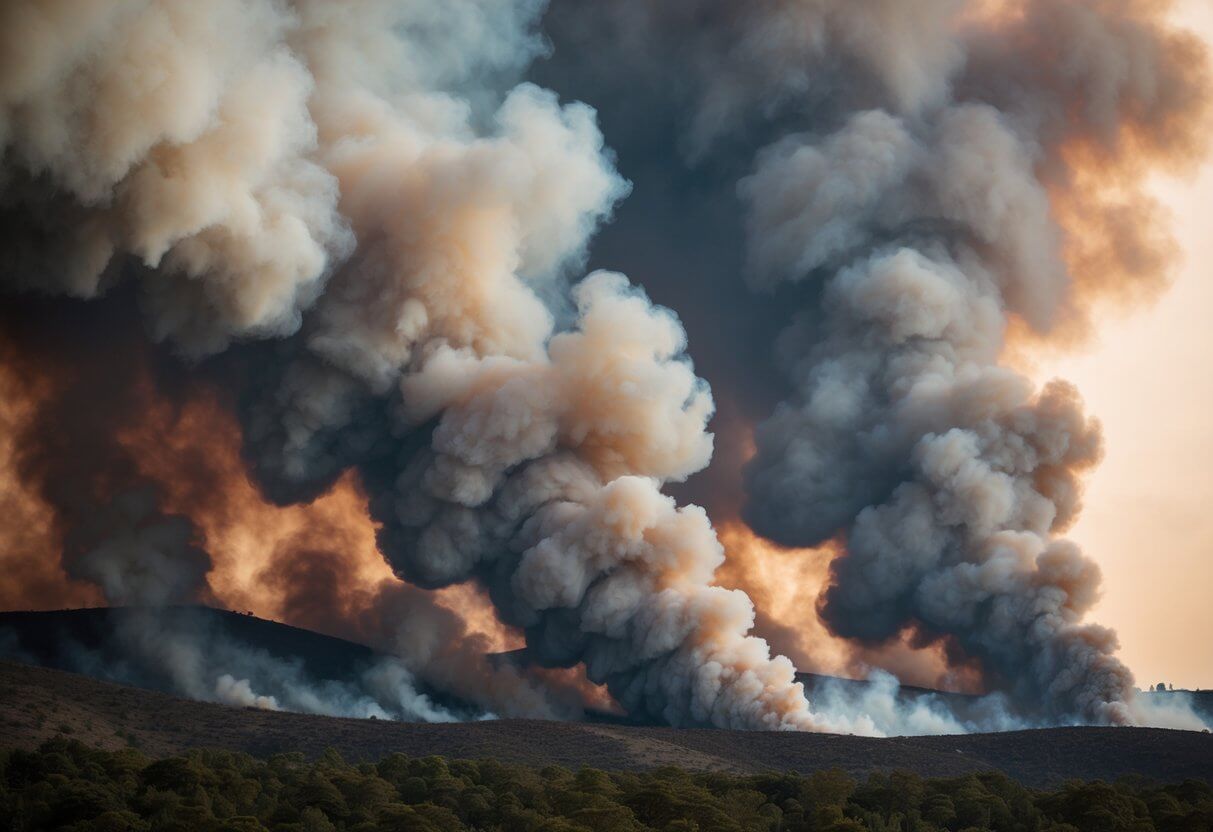
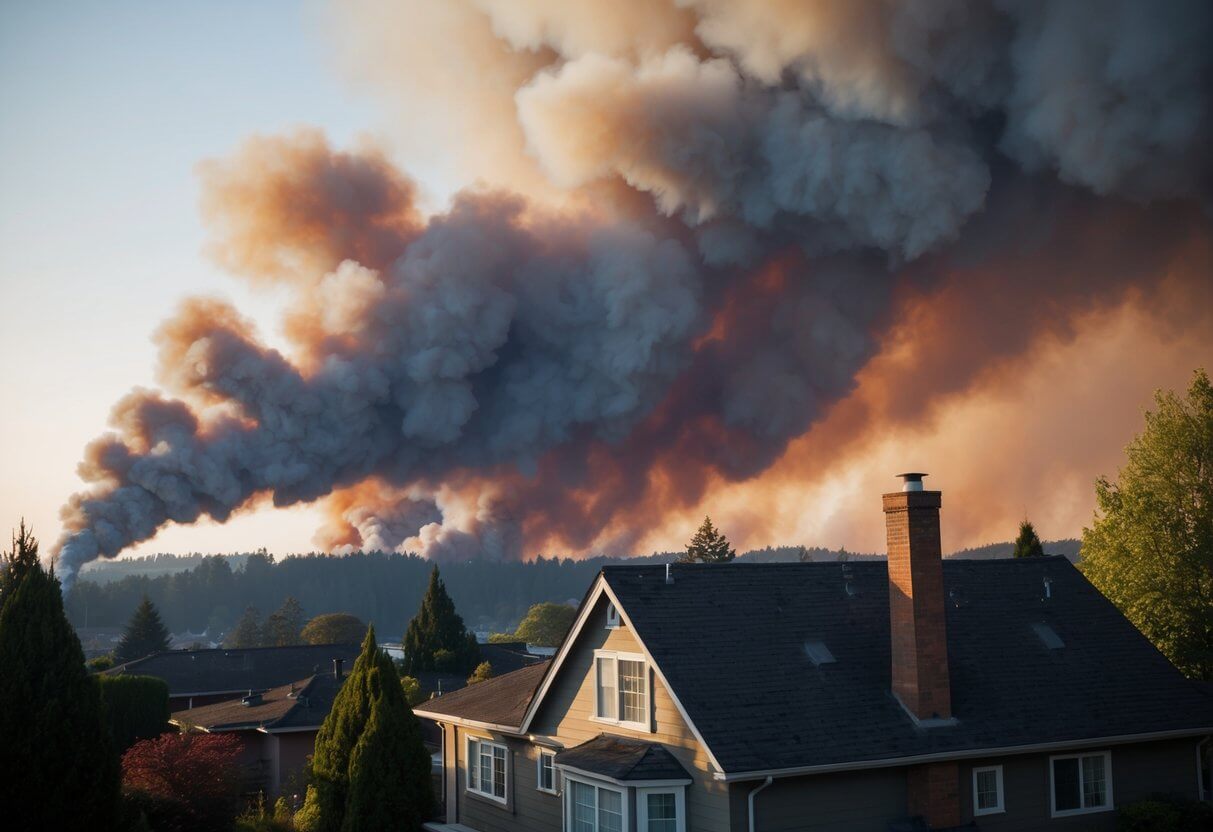
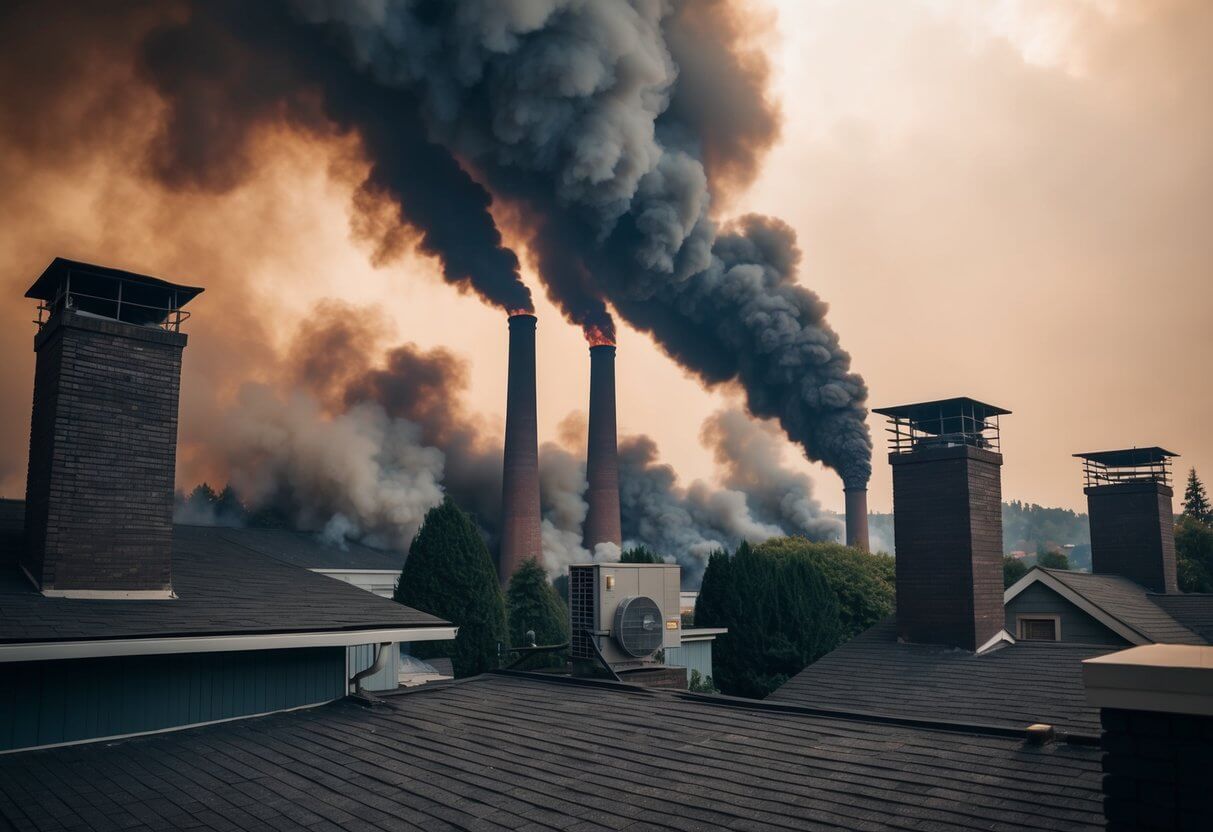
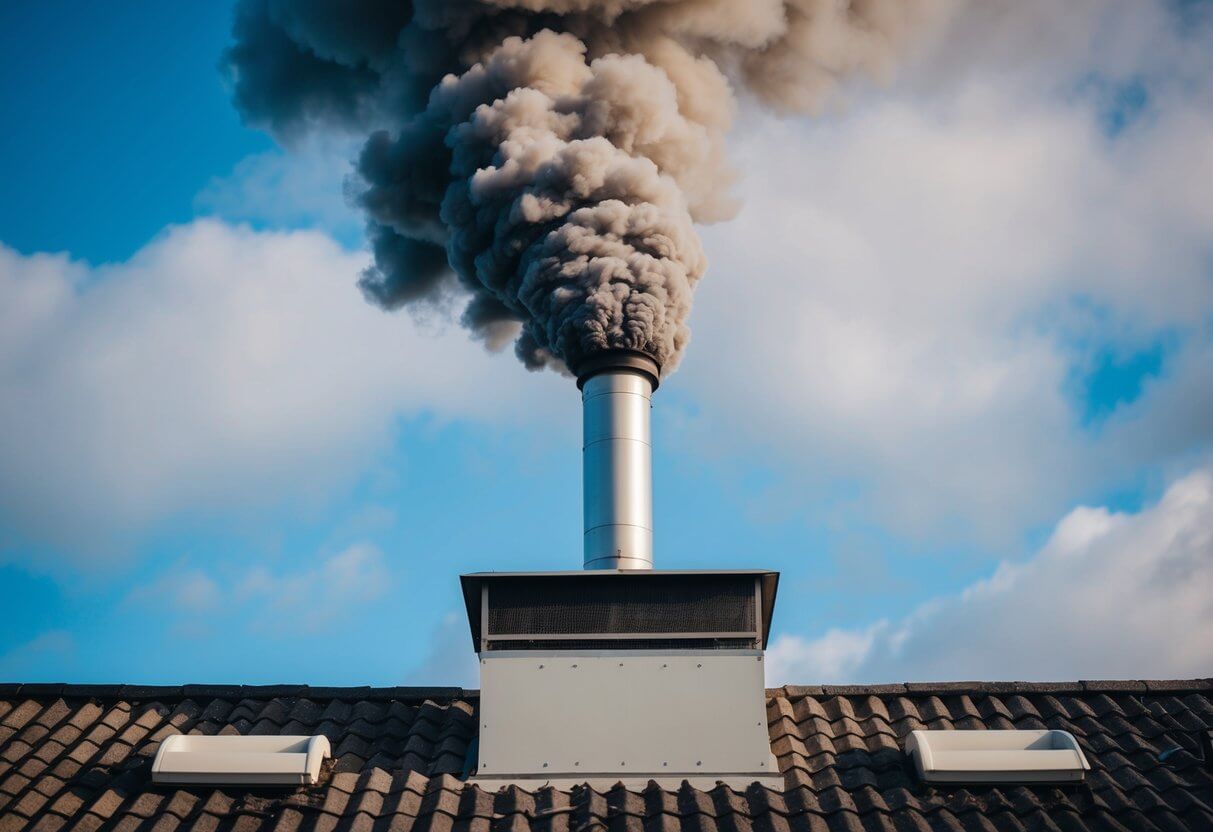
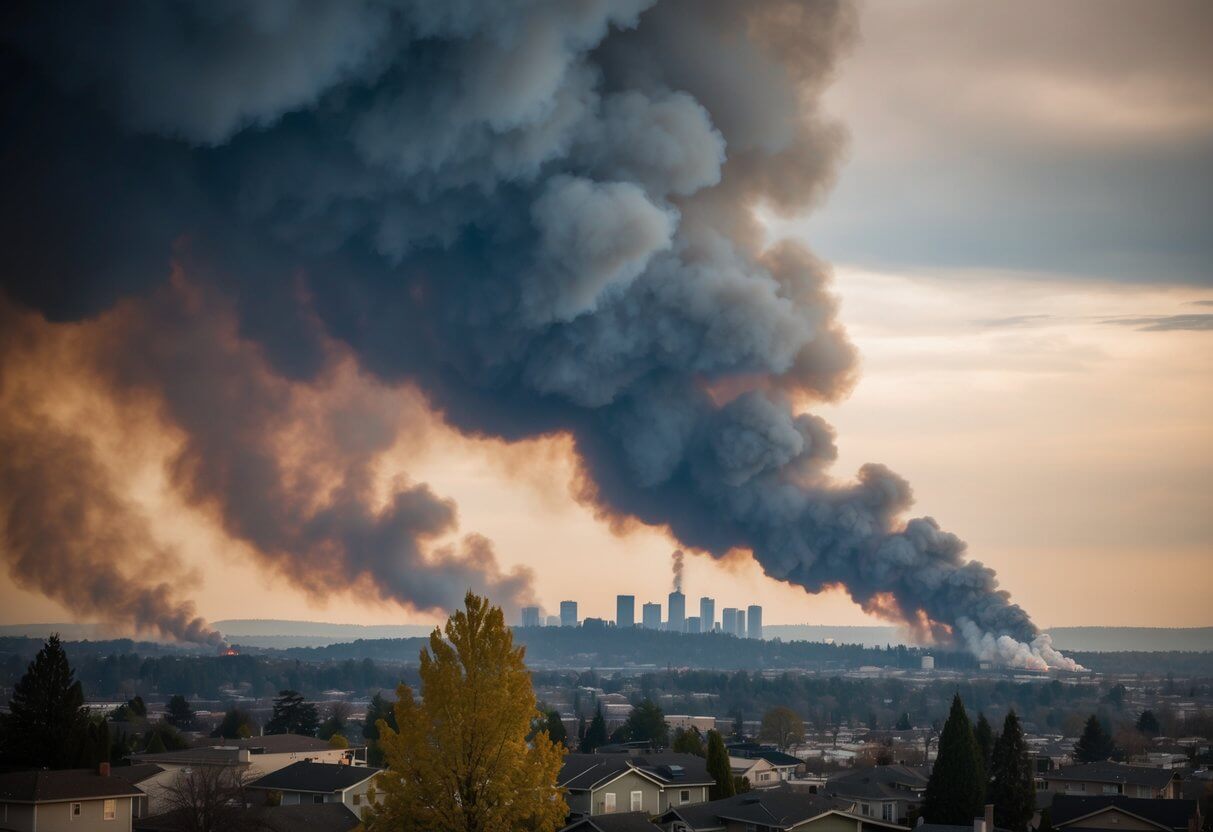

Your article helped me a lot, is there any more related content? Thanks! https://www.binance.com/fr-AF/register?ref=JHQQKNKN
Как подчёркивает заведующая отделением клинической психологии ФГБУН «НМИЦ психиатрии и наркологии» Минздрава России, наличие в команде специалистов с опытом работы в области зависимости — это основа качественной помощи.
Ознакомиться с деталями – http://narkologicheskaya-klinika-nizhnij-tagil11.ru/
I don’t think the title of your article matches the content lol. Just kidding, mainly because I had some doubts after reading the article.
Your point of view caught my eye and was very interesting. Thanks. I have a question for you.
**mind vault**
mind vault is a premium cognitive support formula created for adults 45+. It’s thoughtfully designed to help maintain clear thinking
**mind vault**
mind vault is a premium cognitive support formula created for adults 45+. It’s thoughtfully designed to help maintain clear thinking
**prostadine**
prostadine is a next-generation prostate support formula designed to help maintain, restore, and enhance optimal male prostate performance.
**sugarmute**
sugarmute is a science-guided nutritional supplement created to help maintain balanced blood sugar while supporting steady energy and mental clarity.
**gl pro**
gl pro is a natural dietary supplement designed to promote balanced blood sugar levels and curb sugar cravings.
**mitolyn**
mitolyn a nature-inspired supplement crafted to elevate metabolic activity and support sustainable weight management.
**zencortex**
zencortex contains only the natural ingredients that are effective in supporting incredible hearing naturally.
**prodentim**
prodentim an advanced probiotic formulation designed to support exceptional oral hygiene while fortifying teeth and gums.
**vittaburn**
vittaburn is a liquid dietary supplement formulated to support healthy weight reduction by increasing metabolic rate, reducing hunger, and promoting fat loss.
**yusleep**
yusleep is a gentle, nano-enhanced nightly blend designed to help you drift off quickly, stay asleep longer, and wake feeling clear.
**synaptigen**
synaptigen is a next-generation brain support supplement that blends natural nootropics, adaptogens
**nitric boost**
nitric boost is a dietary formula crafted to enhance vitality and promote overall well-being.
**glucore**
glucore is a nutritional supplement that is given to patients daily to assist in maintaining healthy blood sugar and metabolic rates.
**wildgut**
wildgutis a precision-crafted nutritional blend designed to nurture your dog’s digestive tract.
**pineal xt**
pinealxt is a revolutionary supplement that promotes proper pineal gland function and energy levels to support healthy body function.
**energeia**
energeia is the first and only recipe that targets the root cause of stubborn belly fat and Deadly visceral fat.
**boostaro**
boostaro is a specially crafted dietary supplement for men who want to elevate their overall health and vitality.
**prostabliss**
prostabliss is a carefully developed dietary formula aimed at nurturing prostate vitality and improving urinary comfort.
**breathe**
breathe is a plant-powered tincture crafted to promote lung performance and enhance your breathing quality.
**potent stream**
potent stream is engineered to promote prostate well-being by counteracting the residue that can build up from hard-water minerals within the urinary tract.
**hepato burn**
hepato burn is a premium nutritional formula designed to enhance liver function, boost metabolism, and support natural fat breakdown.
**hepatoburn**
hepatoburn is a potent, plant-based formula created to promote optimal liver performance and naturally stimulate fat-burning mechanisms.
**cellufend**
cellufend is a natural supplement developed to support balanced blood sugar levels through a blend of botanical extracts and essential nutrients.
**prodentim**
prodentim is a forward-thinking oral wellness blend crafted to nurture and maintain a balanced mouth microbiome.
**flowforce max**
flowforce max delivers a forward-thinking, plant-focused way to support prostate health—while also helping maintain everyday energy, libido, and overall vitality.
**revitag**
revitag is a daily skin-support formula created to promote a healthy complexion and visibly diminish the appearance of skin tags.
**neurogenica**
neurogenica is a dietary supplement formulated to support nerve health and ease discomfort associated with neuropathy.
**sleeplean**
sleeplean is a US-trusted, naturally focused nighttime support formula that helps your body burn fat while you rest.
**memory lift**
memory lift is an innovative dietary formula designed to naturally nurture brain wellness and sharpen cognitive performance.
Your point of view caught my eye and was very interesting. Thanks. I have a question for you. https://www.binance.info/el/register-person?ref=IQY5TET4
Thank you for your sharing. I am worried that I lack creative ideas. It is your article that makes me full of hope. Thank you. But, I have a question, can you help me?
AeroMedsRx: AeroMedsRx – AeroMedsRx
https://shorturl.fm/R1w9q
https://shorturl.fm/lm6Hy
https://shorturl.fm/P4gkG
https://rets2021.blogs.rice.edu/2021/07/19/trying-not-to-panic/comment-page-623/#comment-36506
555xgame, yo! Quick games, keeps you entertained. Don’t expect to retire off it, but it’s a good time killer when you’re bored. Give it a look: 555xgame
https://shorturl.fm/WnRyP
Just popping in to say I gave va88bontril a go. Pretty standard stuff. Nothing to write home about, but nothing terrible either. If you’re bored, give it a shot: va88bontril
Okay, 188wbr, you’ve got my attention. Decent odds and a good selection of live games. Will definitely be back. Thanks 188wbr for the chance to win!
bec88bet… That’s a new one. Gotta do my due diligence and see what the vibes are like. Hope it’s legit and has some good games. Let’s find out together! Check it out here: bec88bet
https://shorturl.fm/Zq4Sg
https://shorturl.fm/Pz4of
https://shorturl.fm/i1Vpv
https://shorturl.fm/ub9SM